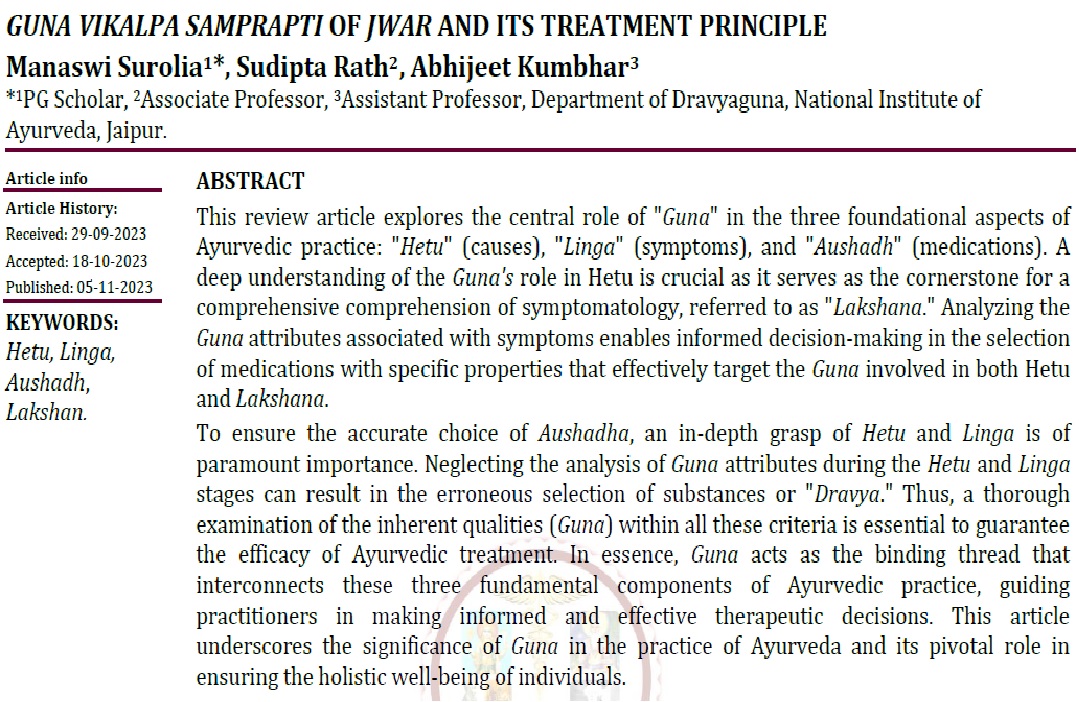Guna Vikalpa Samprapti of Jwar and its Treatment Principle
DOI:
https://doi.org/10.47070/ayushdhara.v10i5.1413Keywords:
Hetu, Linga, Aushadh, Lakshan.Abstract
This review article explores the central role of "Guna" in the three foundational aspects of Ayurvedic practice: "Hetu" (causes), "Linga" (symptoms), and "Aushadh" (medications). A deep understanding of the Guna's role in Hetu is crucial as it serves as the cornerstone for a comprehensive comprehension of symptomatology, referred to as "Lakshana." Analyzing the Guna attributes associated with symptoms enables informed decision-making in the selection of medications with specific properties that effectively target the Guna involved in both Hetu and Lakshana.
To ensure the accurate choice of Aushadha, an in-depth grasp of Hetu and Linga is of paramount importance. Neglecting the analysis of Guna attributes during the Hetu and Linga stages can result in the erroneous selection of substances or "Dravya." Thus, a thorough examination of the inherent qualities (Guna) within all these criteria is essential to guarantee the efficacy of Ayurvedic treatment. In essence, Guna acts as the binding thread that interconnects these three fundamental components of Ayurvedic practice, guiding practitioners in making informed and effective therapeutic decisions. This article underscores the significance of Guna in the practice of Ayurveda and its pivotal role in ensuring the holistic well-being of individuals.
Downloads

Downloads
Published
Issue
Section
License
Copyright (c) 2023 AYUSHDHARA

This work is licensed under a Creative Commons Attribution-NonCommercial-ShareAlike 4.0 International License.


